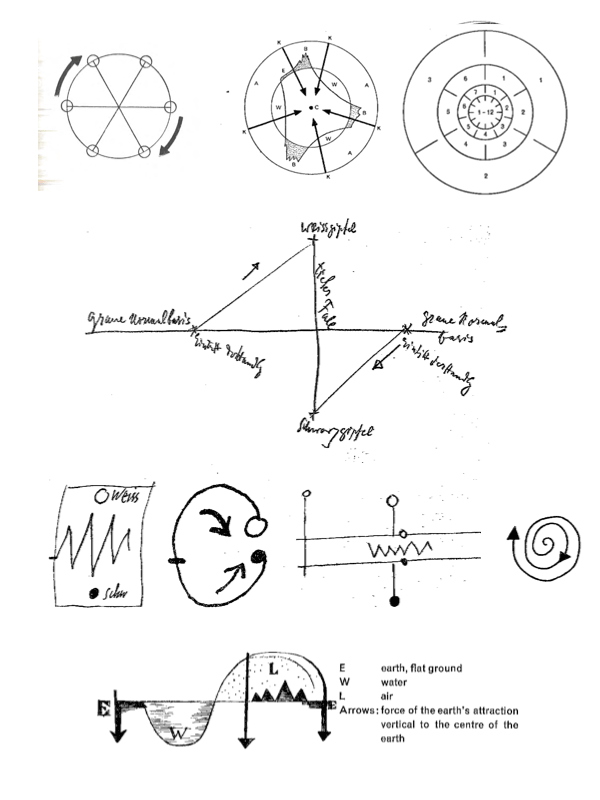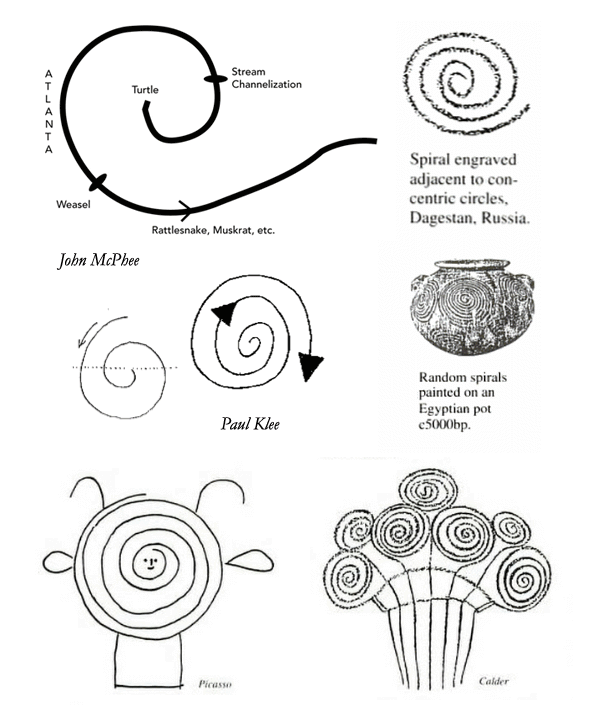
If you read John McPhee’s Draft No. 4: On the Writing Process, you’ll come across several diagrams like the ones above. “McPhee creates them for everything he writes,” wrote Sam Anderson in his terrific profile. “Some of the shapes make almost no sense — they look like the late-stage wall sketches of a hermit stuck in a cave. Others are radically simple.”
McPhee learned the technique from his high school English teacher, Mrs. McKee, who made him do three writing assignments a week. “We could write anything we wanted to, but each composition had to be accompanied by a structural outline, which she told us to do first. It could be anything from Roman numerals I, II, III to a looping doodle with guiding arrows and stick figures. The idea was to build some form of blueprint before working it out in sentences and paragraphs.”
These little inscrutable blueprints reminded me of the diagrams scattered throughout the notebooks of Paul Klee (collected in The Thinking Eye [PDF] and The Nature of Nature [PDF]):

I was also reminded of Sylvia Fein’s First Drawings, which collects cave drawings alongside children’s drawings and work by famous artists:
